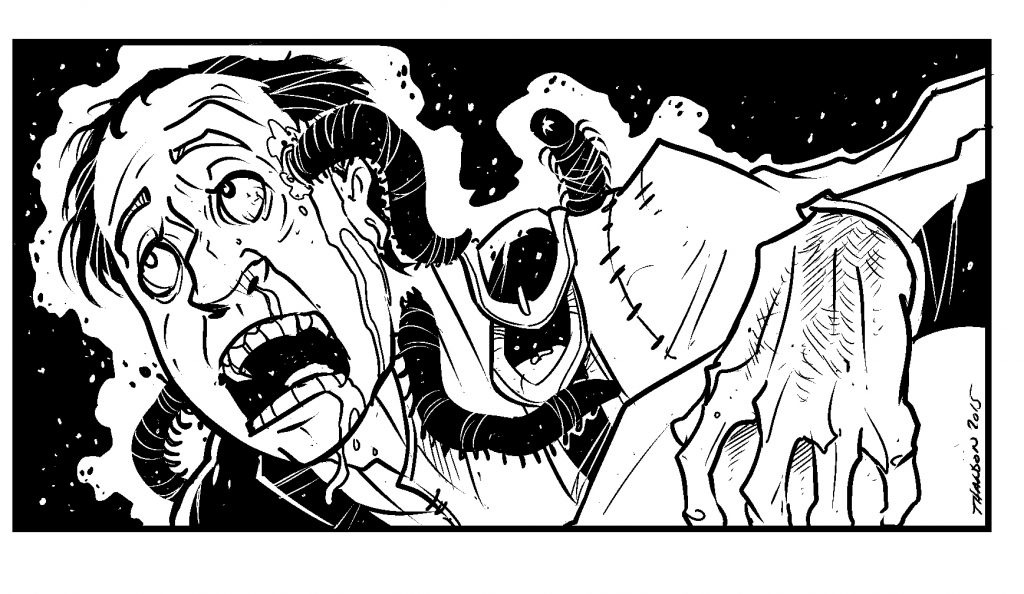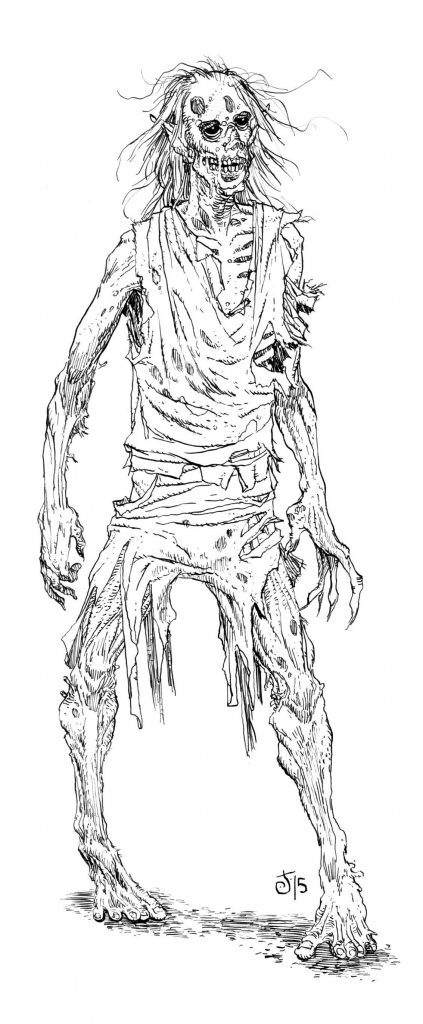It’s late October. Which means Halloween. Spooks. Skeletons. Zombies. All kinds of creepy, scary stuff. It seems appropriate to talk a little bit about Horrors, and how to use them in your Earthdawn campaign.

The Horrors chapter in the Gamemaster’s Guide talks a little bit about Horrors in the game, and using them as long-term, campaign level opponents, rather than one-off “boss monsters.” It also points out that the Horrors should be powerful and terrible.
It doesn’t however, discuss another aspect of using Horrors in the game. When you introduce a Horror to your game, what kind of atrocities will it perform (or entice others to perform), and how do you handle that at the table?
The things Horrors do, the acts they inspire in others (directly or indirectly) can put the game firmly in the horror (small-h) genre. That genre can help us face darkness, evil, or fear in a safe environment. It can allow the exploration of mature themes. Experiencing the discomfort it inspires, in the proper circumstances, can be fun through a kind of catharsis.
It can, in its way, personify or embody an evil, and provide a way to combat and defeat it.
But horror is intensely personal, and that’s where problems can arise.
It may not come as a surprise, given how often I bang this drum, but if you are going to take your Earthdawn game in a darker, more horror-themed direction, you need to discuss it with your group. Find out what they are willing to face, and to what extent. Do they want it implied, or do they want to wade into it?
How “safe” do they want their characters to be? Are they willing to face personal temptation and torment? Is the loss of self-control on the table? Or would they prefer to remain inviolate, acting more as witnesses and chroniclers? The possibility of death is something most people expect in a role-playing game, but what about the so-called “fate worse than death”?
Do individuals in the group have any particular triggers? Topics or “ingredients” that are show stoppers? Phobias? What level of gore are they comfortable with? If you take a look at a breakdown of horror sub-genres (like the one found here), you can start mapping out the territory that your group will find acceptable. Is body horror acceptable? Creepy children? Violence toward children?

Work out the ground rules, set expectations, and stick to them. At the table, it might be useful to incorporate tools like the X-Card in case the game strays into territory that makes anyone uncomfortable.
As the campaign continues, set aside time for debriefs, checking in with your players (individually or as a group) to make sure everything is okay. And if somebody expresses discomfort and wants to tone something down, by all that’s decent, believe them and rein it in. Don’t pressure them to go beyond whatever line they set. Even if it’s farther back than you want. Even if it’s closer than what was discussed at the start of the campaign. Don’t make them feel bad, or guilty, or ashamed of how they feel or react.
Players, be willing to speak up. Communication is vital.
The Horrors should be tormenting the characters. The gamemaster should not be tormenting the players.
Roleplaying games are supposed to be entertainment. Escapism. They can offer the opportunity to push boundaries, perhaps stray a little outside your comfort zone. They can provide wonderful opportunities for emotional depth. But in the end, if you’re not having fun, or you’re having fun at another player’s expense, you’re doing it wrong.
I want to take a few moments to address one particularly sensitive area when it comes to horror, the threat of sexual violence. It is territory especially fraught with pitfalls and hazards. It is possible to positively handle this theme in a game. But so easy to handle it badly.
All that stuff I said above about communication, setting (and respecting) boundaries, and the like? That goes double… triple… infinitely more here. You need to be really careful, have a high degree of trust in the group, and have a rock-solid idea of what you’re doing, why you’re doing it, and where the line is.
Far too many people have experienced sexual harassment or sexual assault to trivialize these things. All too often people will toss in sexual themes in a horror game to be “mature” and it comes off as juvenile. I’m not going to say don’t do it, but… (deep breath)… be really f***ing careful. Just like real life sex, don’t do it without consent of everyone involved.
Okay. Enough.
A couple of miscellaneous footnotes to wrap up this week, kind of tied into the theme. First, if you want to explore horror as a genre, check out Stephen King’s Danse Macabre (Amazon link). It may have been published in 1981, but it’s a great overview and exploration of the genre, and might provide some inspiration.
Second, I really like the madness meters used in Greg Stolze’s Unknown Armies. If you haven’t encountered them, they break psychological stress into different categories, and might provide some inspiration on different ways to put stress on the characters, and through them the players (but in a good way).
Finally, if you or your players aren’t down with exploring horror themes, or comfortable with the intense or emotional experience that might result, that’s okay. You have my official permission to use Horrors as cackling villains or “boss monsters” with high combat values as their most frightening aspect. Leave the darker stuff alone. Don’t let anybody tell you you’re doing it wrong.
